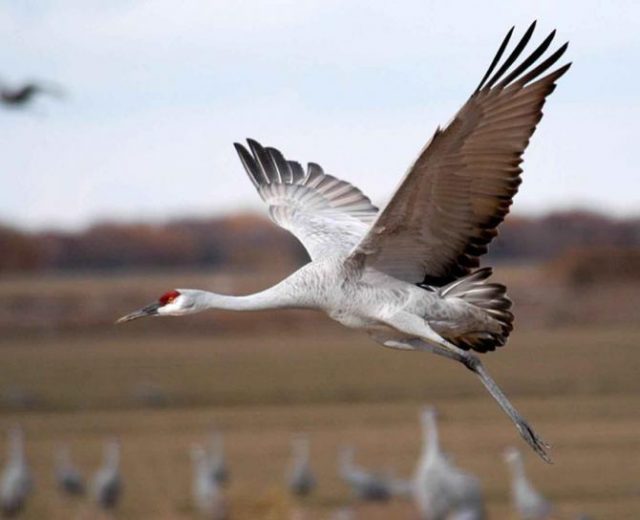COLUMBUS, Ohio – A volunteer-driven sandhill crane survey to locate breeding birds in Ohio is seeking observers to help with the count on Saturday April 15. The Ohio Department of Natural Resources’ Division of Wildlife is coordinating this project as part of the Midwest Crane Count with the International Crane Foundation and Ohio Bird Conservation Initiative.

Caption: Volunteers are needed to count sandhill cranes in Ohio on Saturday, April 15.
Ohioans interested in volunteering should contact a county coordinator. The time commitment includes the time it takes to scout an area, a virtual training, and the morning count. Birders of all abilities who can identify a sandhill crane can participate. A vehicle is also required. Participation in pairs and some experience using the eBird community science platform is preferred.
The sandhill crane is listed as threatened in Ohio, but their population has increased in recent years. Sandhills can be secretive during their nesting season, and the count is an effort to better track Ohio’s breeding crane population.
This year’s count will occur in the counties of Ashland, Columbiana, Delaware, Erie, Franklin, Fulton, Geauga, Hardin, Holmes, Knox, Lake, Licking, Logan, Lorain, Lucas, Mahoning, Marion, Morrow, Ottawa, Pickaway, Portage, Richland, Sandusky, Stark, Summit, Trumbull, Wayne, Williams, and Wyandot. These counties have habitats where sandhill cranes typically nest such as wet meadows, shallow marshes, bogs, and other wetlands.
In 2021, a pilot survey was conducted in Geauga, Holmes, Summit, Trumbull, and Wayne counties. The effort documented 160 sandhill cranes in those five counties. In 2022, approximately 250 volunteers counted more than 300 cranes in 22 counties. Seven new counties will be surveyed in the 2023 count.
Ohio’s cranes are seasonal residents that migrate south for the winter. They feed during daylight hours on grain, insects, birds, small mammals, amphibians, and reptiles. They migrate at high elevations in large flocks, often composed of hundreds of birds. The range of these native birds extends from Mexico and Florida into Alaska and Canada, depending on the season.












